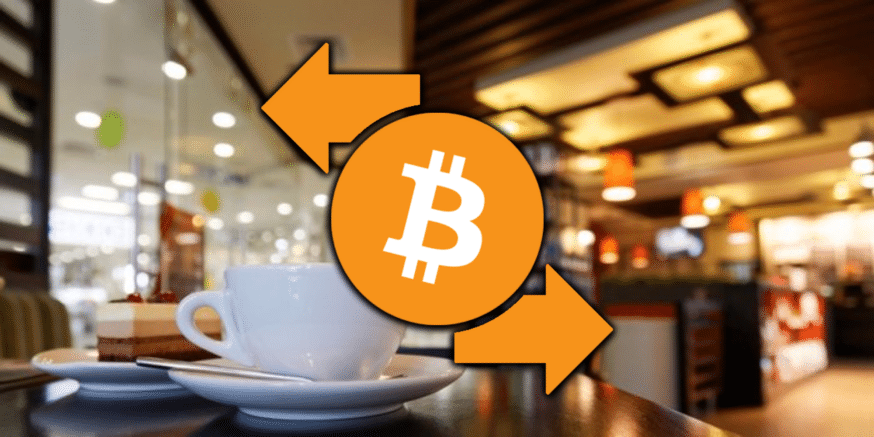You need to understand what a blockchain transaction is before you can invest your money into the crypto market with confidence. These transactions are the backbone of cryptocurrencies. Today, blockchain transactions function in a number of different ways.
A blockchain is a network of computers that stores transactional data in replica across every PC (node) in the system. This data is called a distributed ledger. The data is entered into the chain in intervals known as blocks. Each block is time stamped and its order and transactions verified. This method of storing data in duplicate creates a chain of transactions or in other words, a blockchain.
Blockchain transactions bring huge advantages in terms of transactional speed and transfer fees. A normal bank transfer can take a week to complete. The delays are the result of numerous third-parties operating verification systems. A typical international transaction includes over 36 different third-party organizations.
A Better Alternative
In comparison, cryptocurrency investors can send huge amounts of money for next to nothing. For example, Binance sent $600 million from their exchange wallet to cold storage (offline wallet) for $7 in November 2018. The transaction took under ten minutes to complete.
Attempting the same transaction through the current financial system would take weeks and would cost over 100 times more. The advantages are undeniable. Cryptocurrencies such as Ripple (XRP) intend to bridge the gap between the two markets by providing banks with a blockchain money transfer system that fits into their regulatory requirements.

Irreversible
When blockchain transaction completes, that’s it. There are no refunds, cancellations, or take backs. You can’t alter the data later or even delete the record of the transaction. It’s these traits that give blockchain transactions a huge advantage in the market. The immutable nature of the technology makes it ideal for multiple business sectors including supply chain management, financial services, and government transparency programs.
How Are Blockchain Transactions Approved?
A blockchain transaction’s approval comes from a process known as consensus. Consensus is an agreement between all the nodes on the blockchain as to what is the valid chain. A block adds to the chain once 51 percent of the nodes agree on a transaction’s validity. Nodes compare chains to validate transactions. The longest chain is the valid chain.
This method of verification works well, but it can be corrupted if more than half of your blockchain’s nodes are controlled by one party. Bitcoin’s anonymous creator, Satoshi Nakamoto, warned against these dangers multiple times in the now famous Bitcoin white paper.
Proof of Work
Bitcoin transactions join the blockchain using a form of consensus known as proof of work. The process requires the blockchain nodes to compete against each other to answer a mathematical equation with an answer that starts with four zeros. Different blockchains can use different algorithms. Bitcoin uses the SHA-256 algorithm.
The node that answers the question first gets to add the next block to the blockchain in return for a reward of 12.5 Bitcoin. This process is called mining, and just like mining for gold, there are certain costs associated with the activity.
Originally, when Bitcoin cost pennies, miners received 50 BTC as a reward for adding a block. What’s even crazier is that miners could accomplish these tasks directly from their home PC without the need for any additional hardware. Today, mining is a multibillion-dollar industry.
Nowadays Bitcoin miners utilize high powered ASIC chips to mine BTC more efficiently than ever before. Miners also create large partnerships, or mining pools, to leverage their efforts. Mining pools combine every node’s processing power. The rewards are split-up between nodes based on their computers contributions, also known as hash power.
Your PC can use a lot of energy when processing proof-of-work equations. This growing demand for electrical resources led some cryptocurrencies to develop new, less energy dependent consensus mechanisms.
Proof of Stake
The proof of stake consensus mechanism came about as a direct result of the insane amount of electricity Bitcoin miners gobbled up. To put these concerns into perspective, one report showed that Bitcoin miners used more electricity than the entire country of New Zealand in 2017.
[thrive_leads id=’5219′]
Proof of stake consensus eliminates the need for computers to battle over who is next to add a block to the blockchain. Instead, the protocol chooses nodes randomly or based on their holdings, size, or time in operation. Some coins, such as Peer Coin, use a combination of these factors to decide what node gets to add the next block.
Delegated Proof of Stake
Delegated proof of stake coins require miners to meet certain criteria before they are able to participate as a block validator. The popular cryptocurrency EOS utilizes this consensus mechanism. EOS allows only 21 block validators to operate at a time. This speeds up transactions by reducing the number of nodes needed to approve transactions.
How to Track Transactions
Tracking blockchain transactions is easy. Each blockchain offers some form of block explorer to help you monitor transactions. In the case of Bitcoin, there are multiple block explorers you can use including blockexplorer, blockchain, and live.blockcyoher. You can search a transaction by entering in the wallet address or transaction number. Here you can watch your transactions confirmations.
Security Token Blockchain Transactions
Security token transactions differ from regular blockchain transactions because they include another layer of regulatory standards that must be met. These tokens are not transferable at will or to anonymous individuals. Think of security tokens as securities issued on the blockchain. The SEC regulates and monitors these transactions.
Security tokens bridge the gap between the crypto market and traditional investors. They are considered a safer investment when compared to ICOs, because the company issuing the tokens must verify their company, address, management, and financial statement. Security tokens continue to grow in popularity as more firms look to tokenize assets such as real estate and personal equity.
Blockchain Transactions of the Future
Blockchain transactions have come a long way since Laszlo Hanyecz bought two pizzas for 10,000 Bitcoin in 2010. The crypto market continues to evolve as developers continue seeking out new and more efficient ways to conduct blockchain transactions. The future of blockchain transactions looks bright.





